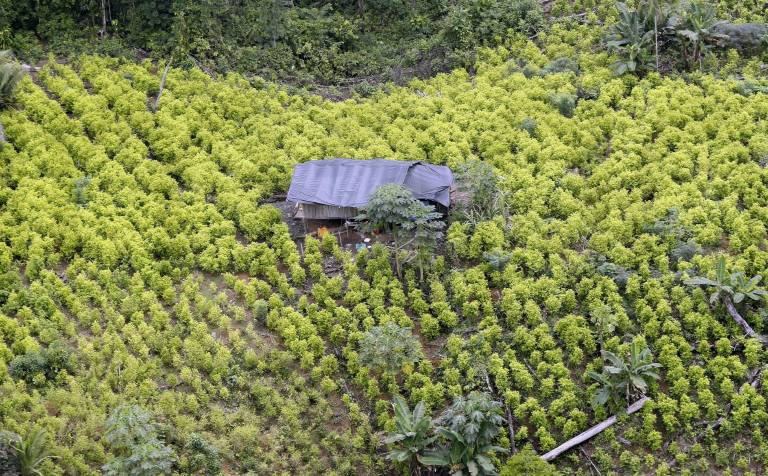In a recent announcement to the public, Bolivian law enforcement authorities have reported the discovery of three crack cocaine “mega-factories” found in the regions of central Cochabamba, south-central Santa Cruz, and eastern Beni. All three sites, which were concealed in national parks and forestry reserves in the regions, have since been destroyed by police forces.
The factories could allegedly yield up to 910 kilograms of crack cocaine per day. In an interview given to Reuters, Deputy Minister for Social Defense and Controlled Substances Jaime Mamani said the Bolivian police forces have “seized a record 7.41 tonnes of cocaine over the past four months.” Mamani also confirmed that authorities are currently “conducting operations throughout [the] territory, along borders and areas where the fight against drug trafficking had not previously reached.”
The increased monitoring and intervention of the drug trafficking industry is critical to maintaining a sense of immediate order and peace amongst high-traffic areas. However, moving forward, it is essential for systemic change to take place that could create institutions to serve as long-term solutions to the narcotics crisis. While police intervention of cocaine production is certainly important to mitigate the current impact of crime, these actions fail to provide a sustainable resolution that will limit future substance production and violent crime as well as improve the overall quality of life in Bolivia.
According to Reuters, some of this increase in coca production can be partially attributed to leadership decisions. “Former Bolivian President Evo Morales, himself a former coca farmer, increased quotas for legal cultivation of the crop” during his term, which have since “been maintained by current President Luis Arce.” While drug production that exceeds these quotas is destroyed, many speculate it has encouraged the continuation and prosperity of the illegal narcotics industry. Additionally, based on information from RT News, Bolivian government officials “extradited a prominent criminal to Brazil over charges of international drug trafficking along the Amazonian border with Brazil” earlier this month in an effort to enforce stricter regulation of drug activity.
Furthermore, “the pandemic and associated economic hardship and joblessness” has caused a greater demand for work in “both coca cultivation and drug production.” Because many individuals are currently struggling to support themselves financially, the narcotics industry and associated “organized crime groups” have served as a means of income for those in desperate need of work.
Taking into account the impact of these economic factors, it is more vital than ever to implement programs that could offer employment and aid to those who are financially burdened due to unemployment. By providing other options for stable income and resources, the Bolivian government could effectively curb the need to find employment in the narcotics industry and subsequently limit the amount of drugs produced and exported.
Such programs have begun to be initiated by the United Nations, such as the “vocational training and promotion of micro-enterprise” to invest in alternative economic ventures in “tourism, agriculture and the food industry” and subsidize many of the associated costs. In addition, the UN has projects targeted at the “sustainable and integrated management of natural resources” in order to better develop and manage agroforestry resources in Bolivia and repurpose land originally utilized for the narcotics industry. In collaboration with the Bolivian government, these initiatives have provided other long-term economic opportunities and benefits for families in the region.
While much of the typical cocaine detection and destruction procedures were adjourned due to the pandemic, they have since been resumed by police forces. Due to the lack of recent crop eradication and the rise of economic stress, the narcotics industry is expected to see a resurgence in both production and exportation in the coming months.
- Cyprus To Strip Passports From Turkish Cypriot Officials - August 28, 2021
- Cuba, Gripped By Unrest, Battles Highest Covid Caseload In The Americas - July 28, 2021
- Taliban Surround Central Afghan City Of Ghazni - July 21, 2021


